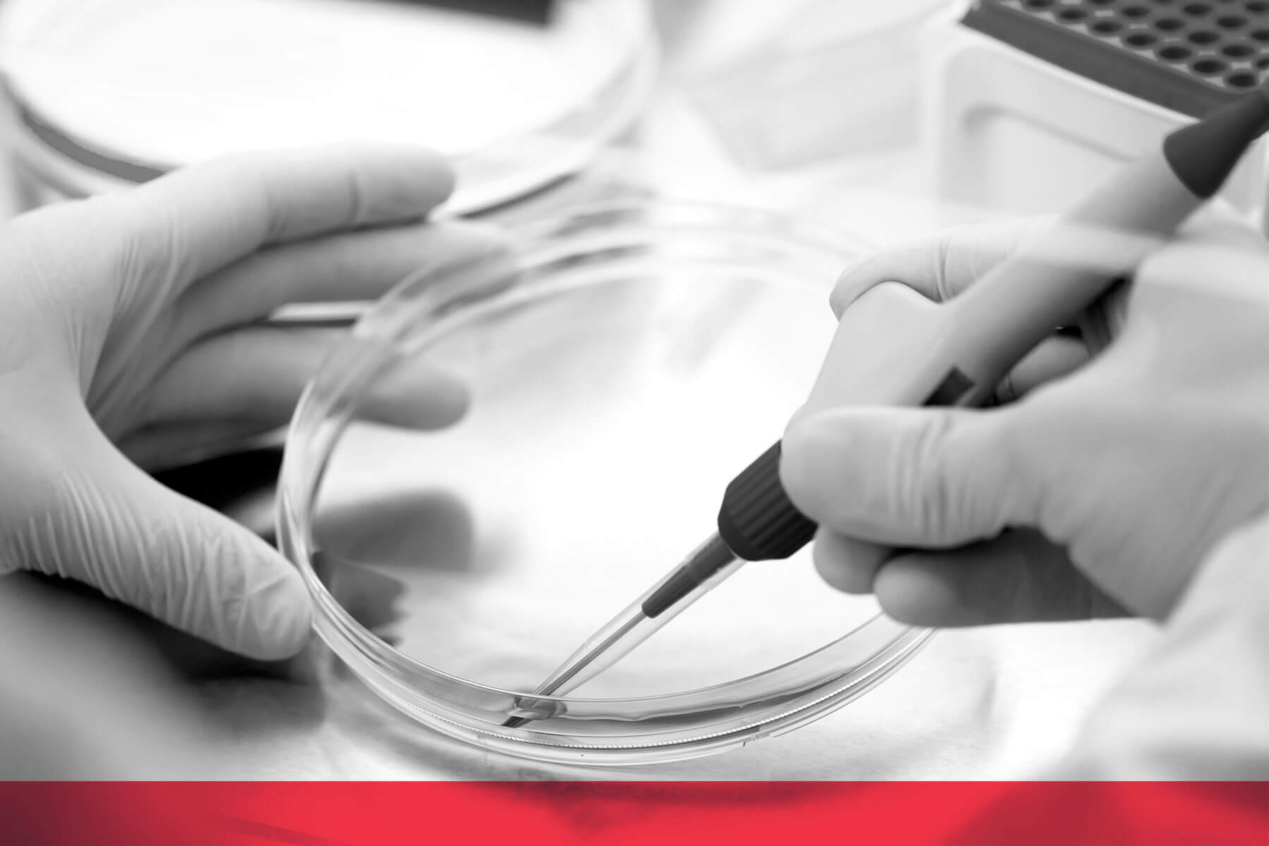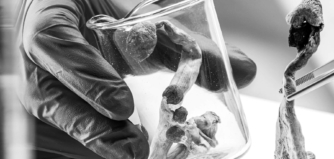Overcoming Obstacles in Stem Cell Research

October 11, 2023
As an overarching category, regenerative medicine offers extensive promise in not only the mitigation of chronic pain and disease, but also as a cure for these same ailments. Given its complexity, however, a wide array of challenges exists in the implementation and conduct of associated clinical trials. This category of medicine encompasses a number of different goals and methodologies, including tissue engineering and cellular therapies, so terminology within the field often differs. For this discussion of regenerative medicine, we are utilizing general concepts from Clinical and Translational Science in considering therapies meant to achieve:
- Replacement: Commonly associated with organ transplants and blood transfusions, replacement utilizes an externally provided healthy cell-based product to restore damaged tissue or function
- Regeneration: Most prominently observed in bone marrow transplantation, regeneration replaces damaged cells and restores function through in vivo growth and differentiation of engrafted progenitor cells
- Rejuvenation: Using a variety of techniques, rejuvenation is meant to reactivate the self-repair capabilities generally associated with younger cells or organisms[i]
As a distinct area, regenerative medicine has weathered its share of controversy, particularly with regard to stem cells. While the debate over this therapeutic category, and more specifically embryonic stem cells, has been highly publicized, the tide has shifted in the favor of researchers, with 2023 Gallup polling showing majority acceptance of embryonic stem cell research on moral grounds and an extensive widening of the gap in favor of approval from 2003 numbers.[ii] Although controversy remains, there is hope in this trajectory, particularly as the use of embryonic stem cells decreases. In contrast, the use of those from other sources grows, including cells collected from bone marrow and adipose tissue, as well as induced pluripotent stem cells, which are adult cells that function as embryonic cells. In many cases, stem cells are even donated by the individual meant to receive them.
It is against this broadening backdrop of public approval and less controversial harvesting methods that the pharmaceutical industry has seen an explosion of regenerative medicine trials, reaching a high of 10% of all clinical trials in 2020 per research reported in Clinical Trials Arena and a count of more than 1,600 ongoing trials around the world as of Q1 2023 according to the Alliance for Regenerative Medicine.[iii],[iv] Falling squarely under this umbrella term, stem cells — which are capable of self-renewal via replication and can recreate functional tissues in the body — continue to show great promise, leading to clinical research focused on spinal cord injury, bone repair, ALS, Alzheimer’s disease, and an array of other conditions.[v] While full classification encompasses many different stem cell types, including totipotent, multipotent and more, for our purposes here, they can be generally divided into two separate categories — pluripotent and adult — containing multiple subcategories:
- Pluripotent stem cells — These stem cells have unlimited capacity for self-renewal and can differentiate into almost every cell type within humans[vi]
- Embryonic — These cells are found in the early stages of development and have the ability to divide indefinitely
- Induced — These are adult cells that are reprogrammed to act as embryonic cells
- Adult stem cells — Found throughout the body, these cells are generally more limited in their capabilities
Clinical Trial Conundrums
Regardless of the type, however, stem cell trials tend to be fraught with significant challenges that make enrollment difficult and conduct complex. In order to overcome these potential roadblocks, sponsors need to understand them before they run up against them.
Given the focus of many stem cell trials on chronic pain and other debilitating conditions and diseases, the targeted patient group is often in desperate need. Unfortunately, stem cell research works on a timeline that is inconsistent with that desperation. Most of these trials are logistically very complex and often involve many patient visits, including cell donation, which can be highly unpleasant depending on the source. For example, in transplantation trials, adipose-derived stem cells (ASCs) can be easily isolated from the patient through minimally invasive procedures. In contrast, harvesting of bone marrow mesenchymal stem cells (BMSCs) can be quite painful and somewhat risky for patient health.[ix] So, the patient is being asked not only to sacrifice a great deal of time but also to potentially endure pain and the potential for further problems depending on the focus of the trial.
While this particular issue relates to autologous therapies, in which the patient provides the stem cells that will then be put back into their own body, timeline issues persist even for allogeneic therapies, which utilize donated, off-the-shelf cells not taken from the patient. For all stem cell trials, the FDA requires longer safety reviews than with other trial types, including a 24-month wait for unblinding of the study. This means patients dealing with severe pain or debilitating conditions may submit to a trial in hopes of finding relief, receive a placebo, and then not be eligible for an open-label extension until three years after they began their participation. While safety must be paramount, this lengthy wait for these sorts of conditions is a difficult proposition for potential enrollees to swallow and can make recruitment quite problematic. Some sponsors have attempted to sidestep this problem by adapting the randomization schema to give patients better odds of receiving the active study product. Still, there is a limit to how effective this strategy can be with patients in desperate need of relief.
Apart from these potential enrollment issues are the numerous other logistical complications inherent in stem cell research. Complexity is built into these trials from the start, with disease screening, viability assays, and tests for purity, safety, and potency.[x] These cells also require highly specialized transportation and storage, either utilizing nitrogen freezing or cryo shippers, and these transport and storage methods must be monitored 24/7 to ensure no disruption in temperature would affect viability, all of which adds cost on top of complexity.
Injecting Success
As the evolution of public sentiment on stem cells expands alongside the advancements in collection and engineering, the actual conduct of research using stem cells continues to provide a wealth of challenges. To overcome them, sponsors must give careful consideration to potential pitfalls as early in the process as possible and enlist expert partners to help smooth every step.
Staffing: Whether you need full site management services or limited functional service provider options, it pays to have trusted professionals on your team. Ensure you have the right people for the right research by choosing a partner with a deep pool of talent. Given the specialized nature of stem cell therapy and its extensive regulatory requirements, bringing aboard true expertise pays.
Enrollment: Experienced CROs, like PRC Clinical, have vast networks and access to a variety of sites and corresponding patient populations. This offers a built-in method for finding interested, qualified individuals. When possible, utilizing an allogeneic therapy can help decrease patient hesitance, and the aforementioned randomization adjustments may alleviate some fears of receiving a placebo. While there is little to be done about the lengthy time frame required for these trials, consistent patient outreach and straightforward information can keep frustration at bay.
Trial conduct: With stem cell trials, you must run a tight ship. This starts with ensuring you have the right size and right-fit solutions that meet the specific needs of your research. Attentiveness to patients, timelines, deliverables, and day-to-day responsibilities must be both regimented and agile. While nothing must go wrong, it’s equally important that when something does, it can be quickly rectified. This is particularly true given the complex storage and transportation requirements for the therapies being studied.
By acknowledging and addressing these challenges head-on, you can plan a stem cell clinical trial that is as efficient and effective as possible. While there are many difficulties unique to this therapeutic area, from planning and recruitment through the entirety of conduct, having the right knowledge and resources in place will give you a leg up and help smooth the process.
With extensive hands-on experience in regenerative medicine trials and a full-service approach, PRC Clinical brings TLC to every aspect of your stem cell therapy research. Get in touch to discover how collaboration can fuel success.
References
[i] Nelson, T.J., Behfar, A., & Terzic, A. Strategies for therapeutic repair: The “R(3)” regenerative medicine paradigm. Clin Transl Sci. 2008 Sep;1(2):168-171. doi: 10.1111/j.1752-8062.2008.00039.x. PMID: 19756244; PMCID: PMC2743025.
[ii] Stem Cell Research. Gallup. 2023. https://news.gallup.com/poll/21676/stem-cell-research.aspx
[iii] Regenerative medicine clinical trials continue to rise. Clinical Trials Arena. Nov. 14, 2022. https://www.clinicaltrialsarena.com/comment/regenerative-medicine-trials/?cf-view
[iv] Clinical trials regular report 2023 Q1. Alliance for Regenerative Medicine. 2023. http://alliancerm.org/wp-content/uploads/2023/08/Clinical-Trials-Regular-Report-2023-Q1-20230720-002.pdf
[v] Stem Cell Basics. National Institutes of Health. Accessed: Aug. 31,2023. https://stemcells.nih.gov/info/basics/stc-basics
[vi] Nguyen, H.T., Jacobs, K., & Spits, C. (2018). Human pluripotent stem cells in regenerative medicine: where do we stand? Reproduction, 156(5), R143-R153. https://doi.org/10.1530/REP-18-0291
[vii] Merimi, M., El-Majzoub, R., Lagneaux, L., et al. The Therapeutic Potential of Mesenchymal Stromal Cells for Regenerative Medicine: Current Knowledge and Future Understandings. Frontiers. Aug. 18, 2021. https://www.frontiersin.org/articles/10.3389/fcell.2021.661532/full
[viii] Guilak, F., Pferdehirt, L., Ross, A.K., et al. Designer Stem Cells: Genome Engineering and the Next Generation of Cell-Based Therapies. J Orthop Res. 2019 Jun;37(6):1287-1293. doi: 10.1002/jor.24304. Epub May 2 2019. PMID: 30977548; PMCID: PMC6546536.
[ix] Mohamed-Ahmed, S., Fristad, I., Lie, S.A., et al. Adipose-derived and bone marrow mesenchymal stem cells: a donor-matched comparison. Stem Cell Res Ther 9, 168 (2018). https://doi.org/10.1186/s13287-018-0914-1
[x] Yen-Shun, C., Yi-An, C., Pei-Hsun, T., et al. (2016) Mesenchymal Stem Cell: Considerations for Manufacturing and Clinical Trials on Cell Therapy Product. Int J Stem Cell Res Ther 3:029. 10.23937/2469-570X/1410029



